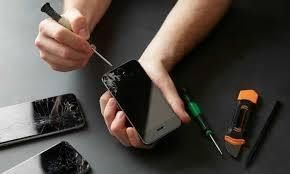Buying or using an iPhone is a premium experience, and whether you're purchasing a second-hand device or just curious about your current one, verifying its authenticity is important. An original, factory-sealed iPhone typically guarantees better longevity, smoother performance, and proper warranty support. On the other hand, a repaired or refurbished iPhone may still function well, but knowing its history helps avoid unexpected problems. Many users unknowingly use altered or third-party repaired devices without understanding the potential risks, especially regarding safety and performance. To ensure you're getting what you paid for—or to confirm your phone hasn’t been modified without your consent—there are clear methods to check if your iPhone is original or has undergone repair. This article breaks down the steps to determine the originality of your iPhone using both physical and software-based methods, giving you peace of mind and helping you make informed decisions.
Verify iPhone Model Number and Region Code
The model number of your iPhone can give immediate insight into its origin. You can find this number by going to Settings > General > About. There, you’ll see a model identifier starting with one of three letters:
- M: A retail unit (brand new).
- F: A refurbished unit officially by Apple.
- N: A replacement device from Apple.
- P: A personalized device (like engraving).
The letter at the start tells you whether your iPhone was sold new, refurbished, or replaced. For instance, if you’re expecting a brand-new iPhone and it starts with "F" or "N", your phone is likely not original in the sense of never having been used before. Pairing this check with your receipt and warranty status will give you a clearer picture of your phone’s past.
Use Apple’s Service and Support Coverage Tool
Apple offers a handy online tool to check your iPhone’s warranty status and repair history. Go to the Apple Support website and enter your device’s serial number (found under Settings > General > About). This tool reveals:
- Whether your iPhone is still under warranty
- If AppleCare coverage is active
- Whether the phone has been serviced or replaced by Apple
If Apple’s system shows discrepancies with what your seller told you—or if no information shows up at all—there’s a good chance your iPhone wasn’t purchased through official channels or has been altered outside of Apple's ecosystem.
Check for Third-Party Parts in iOS Settings
With the release of iOS 15.2 and later, Apple introduced a Parts and Service History section under Settings > General > About (only on iPhone XR and newer). This feature tells you if any core components—like the battery, display, or camera—have been replaced, and whether those parts are genuine Apple components.
For example:
- “Unknown Part” or “Non-Genuine” will show up if a third-party technician replaced your screen or battery.
- A component showing “Replaced” but not marked as “Apple Genuine” indicates a likely repair outside the authorized network.
This is a significant and trustworthy way to confirm if your iPhone is original or has been tampered with. Apple’s firmware is built to detect the authenticity of internal parts.
Examine Physical Condition and Internal Screws
Visual inspection remains one of the oldest yet effective ways to spot if an iPhone has been opened or repaired. Look for the following signs:
- Slight screen misalignment or gaps between the display and frame.
- Unusual screw heads or stripped screws near the charging port (technicians often need to open these).
- Discoloration or light bleeding on the edges of the screen, which may indicate non-OEM parts.
- Dust or fingerprint smudges under the screen suggest previous opening.
Many third-party technicians don’t follow Apple’s strict assembly processes, so even a slightly loose frame can indicate prior tampering. A clean, seamless body with no signs of prior opening is often a good sign of authenticity.
Confirm Serial Number and IMEI Consistency
The serial number and IMEI printed on the box, SIM tray, and the one inside your iPhone should match. You can cross-check by dialing *#06# or by going to Settings > General > About. If the numbers don’t match across these areas, it could mean parts of your phone have been replaced or mixed with those from another device. This is common in devices that have undergone significant third-party repairs, including motherboard swaps.
Also, counterfeit iPhones may come with cloned or duplicated serial numbers, making this check even more important. Apple’s own verification system won’t recognize a fake IMEI or serial number, immediately raising red flags.
Evaluate Display Quality and Touch Response
An original iPhone screen has accurate color balance, smooth scrolling, and excellent touch sensitivity. Aftermarket displays—even the high-quality ones—often fall short in at least one of these areas. Common issues in non-original screens include:
- Overly saturated or dull colors
- Inconsistent brightness or uneven lighting
- Delayed touch response or ghost touches
If your iPhone is new and showing any of these symptoms, chances are you’re using a device with a replaced screen. Apple’s original OLED or Retina displays are calibrated with their system, which makes any slight deviation easier to detect.
Look for Apple Genuine Battery Warnings
If your iPhone's battery has been replaced with a non-genuine component, iOS will typically notify you. On iPhones with iOS 13 and later, a Battery Health section exists under Settings > Battery > Battery Health & Charging. There, you might see a message saying:
“Unable to verify this iPhone has a genuine Apple battery.”
This warning clearly tells you that the battery was replaced without Apple’s official service tools or non-genuine parts were used. If your phone doesn’t display any warning, and you’ve been using it for some time, it likely retains the original battery.
Analyze Face ID and Touch ID Functionality
Biometric features like Face ID and Touch ID are notoriously sensitive to repairs. After unauthorized screen or camera repairs, Face ID often stops working. Similarly, if your Touch ID is unresponsive or doesn’t allow fingerprint setup, the home button could have been replaced or tampered with.
Apple pairs each biometric sensor to the main logic board. Unless a repair is done by an authorized technician with the right tools, replacing these features breaks the pairing and disables them permanently.
If these features don’t work—and you bought the phone expecting them to—chances are your iPhone has undergone unofficial repair work.
Review Purchase Receipts and Service History
Ask for the original invoice, AppleCare history, or service records if you're buying a used iPhone. These documents can show whether the phone was purchased new or refurbished and detail any repair claims, replacements, or coverage expirations. Sellers that cannot provide this documentation may be hiding something about the device’s origin or condition.
Furthermore, if you're dealing with local repair shops, ensure you’re working with reputable providers. For instance, if you're seeking iPhone Repair in Port Charlotte, FL, working with certified technicians can help maintain the originality and performance of your device, especially when replacing delicate internal parts.
Final Thoughts: Trust but Verify
Checking whether your iPhone is original or repaired isn’t just about curiosity—it’s about protecting your investment, data, and future device performance. By examining both hardware and software cues, users can easily differentiate between a genuine, untouched iPhone and one that's been previously repaired. With Apple continuing to push transparency through iOS features, the process has become more user-friendly than ever. From model numbers to display quality and biometric reliability, everything you need to check is at your fingertips—literally.
Welcome to Techy Port Charlotte, your local destination for reliable and affordable iPhone repairs. Whether you own the latest iPhone 14 or an older model, our certified technicians are trained to resolve all common and complex issues with speed and precision.



Top comments (0)